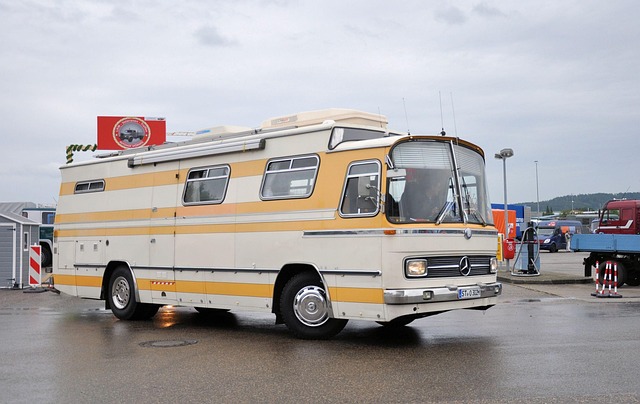“Unsure about how to register your car in California? This comprehensive guide breaks down the process step-by-step. First, understand the state’s requirements for car registration, including necessary documents and DMV VIN verification. Then, gather all essential paperwork and visit a local DMV office or complete the process online or by mail. Learn how to pay registration fees, select license plates, and ensure your vehicle is legally registered in California.”
- Understand California Car Registration Requirements
- Gather Necessary Documents for Vehicle Registration
- Visit the DMV: Step-by-Step Vin Verification Process
- Pay Registration Fees and Choose License Plate Options
- Register Your Vehicle Online or by Mail
Understand California Car Registration Requirements

Before registering your car in California, it’s crucial to understand the state’s specific requirements. The California Department of Motor Vehicles (DMV) mandates several steps for new and used vehicle registration, including a comprehensive VIN (Vehicle Identification Number) verification process. This is a critical step that ensures the authenticity and history of your vehicle.
The DMV conducts a thorough inspection using the Vehicle History Report, which is based on the unique VIN. A mobile VIN inspection service can expedite this process by providing on-site verification, making it particularly convenient for those with busy schedules or limited mobility. This alternative approach saves time and effort while ensuring compliance with California’s registration standards.
Gather Necessary Documents for Vehicle Registration

Before heading to the California Department of Motor Vehicles (DMV), ensure you have all the essential documents for vehicle registration. This includes your car’s title, which proves ownership, and a current insurance card. The DMV requires a valid, signed Vehicle Identification Number (VIN) verification form, which can be obtained through a mobile vin verifier or by completing a physical inspection. Additionally, bring along any necessary paperwork related to previous registrations, tax documents, and proof of residency.
A key step in the process is the VIN inspection. Whether you opt for a mobile vin inspection or visit a DMV office, this verification ensures your vehicle’s history is accurate and free from any discrepancies. Accurately documenting your car’s information not only simplifies registration but also plays a crucial role in ensuring safe and legal operation on California’s roads.
Visit the DMV: Step-by-Step Vin Verification Process

To initiate the car registration process in California, the first step is to visit your local Department of Motor Vehicles (DMV) office. Upon arrival, locate the dedicated Vin Verification station—a critical part of the registration procedure. Here’s a simplified breakdown of what to expect during this process.
First, you’ll need to present essential documents, including proof of ownership and identification. Then, a DMV inspector will guide you through a meticulous vin inspection. This involves verifying the vehicle’s unique identifier (VIN) by cross-referencing it with their database. They’ll check for any discrepancies or if the car has been reported stolen. For added convenience, many DMVs now offer mobile vin verification services, allowing you to complete this step without driving your car onto the premises. This modern approach streamlines the process, especially for those with busy schedules.
Pay Registration Fees and Choose License Plate Options

After completing the registration application process, it’s time to pay the registration fees for your vehicle in California. These fees vary based on the type of vehicle and its emissions status. Make sure to have a valid VIN (Vehicle Identification Number) verification from a mobile vin verifier or through a vin inspection to meet state requirements. The DMV offers various license plate options, allowing you to customize your plates with different colors, designs, or even personalized text for an additional fee.
When selecting license plate options, consider factors like aesthetics and practicality. You can choose standard plates, heritage plates, or specialized plates tailored to specific interests like classic cars or motorcycles. Ensure that your chosen design complies with DMV guidelines. Promptly complete the registration process by paying the fees and selecting plates, as this will enable you to legally operate your vehicle on California roads.
Register Your Vehicle Online or by Mail

You have the option to register your vehicle in California either online or by mail. Both methods involve a series of straightforward steps that require minimal effort and time. For a seamless experience, start by obtaining a Vehicle Identification Number (VIN) verification report. This can be done through a mobile vin inspection service for added convenience, ensuring that all details are accurate before initiating the registration process.
If registering online, visit the California DMV website to access the necessary forms and guides. You’ll need to input your vehicle’s VIN during this process, which will facilitate a quick verification step. Alternatively, if mailing in your application, you can request a form from the DMV or download it from their site. Ensure all required documents are attached, including proof of ownership, insurance, and completion of the vin inspection—whether through a mobile vin verifier or a traditional inspection center.
Registering a car in California involves understanding specific requirements, gathering essential documents, and completing a straightforward process at the DMV. By following these steps, from Vin verification to fee payment and plate selection, you can ensure your vehicle is legally registered. Alternatively, online or mail-in registration offers added convenience. Remember to keep your documentation up-to-date for a seamless driving experience in The Golden State.



